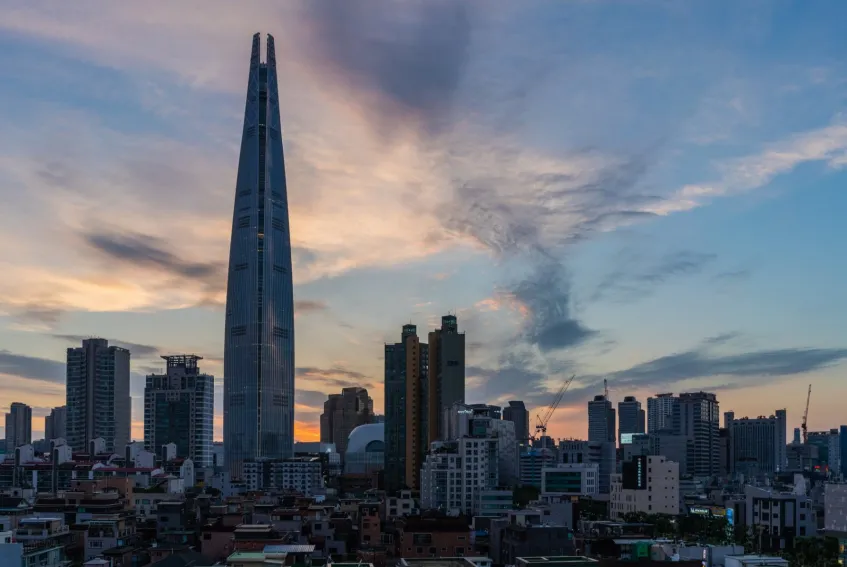
Here’s why Korean retail yields will remain stable till 2025
Retail mall stock per capita is low in Korea relative to its global peers.
In 2020, Korea’s GDP contracted by 1.1%, the first contraction since 1998. The Bank of Korea (BOK) expects growth to bounce back by 2.5-3% in 2021 and 2022. COVID-19 outbreak took a heavy toll on the economy. According to JLL, export volume declined by 4.6% while the import volume plummeted by 12.7% in 2020, moderated by a surge in activity in 2H2020. December’s export amount was the sixth largest in volume in Seoul’s history, and the nation’s trade balance stayed in the black for the eighth straight month.
In May 2020, the BOK lowered its benchmark interest rate to a record low 0.5% in the face of economic uncertainty, and it held this rate unchanged amid the prolonged COVID crisis. Since the rate cut, JLL says the 10-year government bond yield has hovered around the 1.3-1.8% range.
Economists expect the monetary policy to remain dovish for the most of 2021. The spread between 3-year and 10-year government bond yields has widened as a result of the government’s recent announcement of expansive policy. Given low benchmark interest rate, 3-year government bond yield reached 0.95% in 4Q20, down 46 bps year on year.
Borrowing rates for senior loans fell just 20 bps in 2020, despite a 80bps cut in BOK benchmark interest rates, as banks and lenders took a conservative stance and raised their risks premia. As a result, we expect senior loan rates to rise by just 20 bps by 2024, even if BOK benchmark interest rates were to start rising from 2022 and revert back to 2019 levels by 2024.
Here’s more from JLL:
In 2020, Seoul’s prime shopping mall retail yields expanded by 75bps as the rental outlook was severely impacted by the pandemic. Prior to the COVID-19, heightened uncertainties for retail demand had already affected the sector and yield compression for retail assets lagged that for office and logistics assets since 2016.
Nevertheless, premium Seoul retail malls have delivered resilient performance. Relative to the global peers, retail mall stock per capita is low and retail malls have pivoted towards entertainment and experiential trades that continue to draw foot traffic and new retail brands. Hence, we expect retail mall sales to rebound once the economy recovers and we expect retail yields to remain stable till 2025 even amidst a 20bps increase in borrowing costs.
What Could Happen to Seoul Prime Office Yields?
Despite the pandemic, Seoul office yields compressed by 17bps on average in 2020 due to lower borrowing costs and relatively stable office market demand supply dynamics. In 2015-2019, office yields have remained 130 bps above borrowing costs on average. From 2021, we expect the yield spread to narrow slightly as institutional investors continue to compete aggressively for core office assets and the stock of available opportunities remains scarce. This will offset the anticipated 20bps increase in borrowing costs and allow cap rates to remain stable.
What Could Happen to Korea Logistics Yields?
Over the last five years, Seoul logistics yields have compressed by 200 bps, significantly more than the average 50 bps movement in other Asia markets. This was driven primarily by strong structural demand tailwinds, increase in the share of global institutional tenants and improved tenant income profiles. Logistics yield spreads over office yield and cost of debt now sit at 100 bps and 250 bps respectively.
Over the next 5 years, we expect logistics yields to compress by 50-70bps. While supply of new completions is high, we expect this to be absorbed as demand for modern logistics assets remains strong. Institutional investors’ appetite for quality logistics assets continue to increase and the Seoul market is core target market for these funds given its high cash on cash yield and compelling e-commerce adoption rates. Due to strong competition for logistics assets, some investors have recently moved up the risk curve, taking on development projects or forward purchases.



















 Advertise
Advertise




